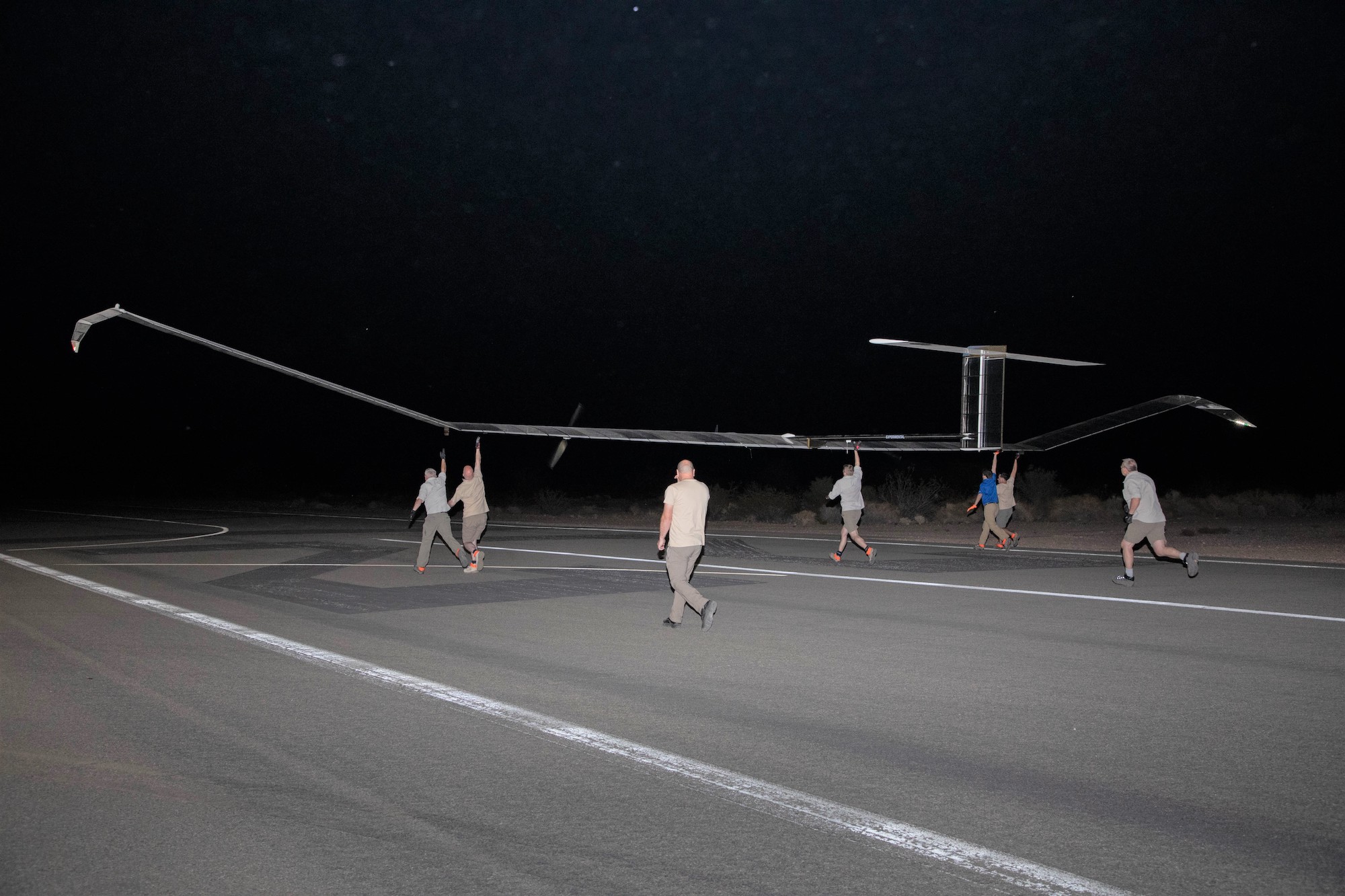

In mid-June, a drone called the Zephyr took off from Arizona. The solar-powered aircraft remained in the sky, flying through the rest of June, all of July, and about half of August. It flew, according to the Army, more than 34,500 miles. It even ventured over South America.
But one night last week, something went wrong. While above the Yuma Proving Ground (YPG), which sits right near the border between Arizona and California, it “encountered events that led to its unexpected termination,” according to an Army release. The Army says that it is investigating what happened.
All told, the aircraft, which is designed to soar at altitudes north of 60,000 feet, remained airborne for 64 days. Previously, the drone had completed other very long duration flights, such as one in 2018 that lasted almost 26 days, and two flights last year of about 18 days. As for the ultra-long journey that just suddenly ended, the Army says that it’s the longest flight on the books for an uncrewed aircraft, noting that it “beat all known unmanned aircraft endurance records.” However, as Simple Flying notes, a bizarre flight involving two pilots in a Cessna that took place between 1958 and 1959 lasted for nearly 65 days, so the record the Army is boasting about is for uncrewed aircraft.
[Related: A solar-powered Army drone has been flying for 40 days straight]
So what happened to cause this flight to suddenly end? “Our team is working hard to gather and analyze important data following the unexpected termination of this flight,” Michael Monteleone, a cross-functional team director with Army Futures Command, said in a statement. The Army also notes that no one was hurt in the event.
Meanwhile, Simple Flying used the flight data it was able to glean and notes that its last moments had it at an altitude of some 45,000 or 50,000 feet, and that it experienced “a vertical descent rate which rapidly increased, topping out at a speed of 4,544 feet per minute.” As both that outlet and Task & Purpose speculate, the resulting unplanned impact with the ground was probably not gentle.
The Zephyr gets its power from the sun, via onboard solar panels, and can store that energy in a battery system so that it has the juice it needs to keep flying when the sun isn’t shining. Made by Airbus, the most recent version has a wingspan of 82 feet.
An aircraft like the Zephyr is known as a HAPS, which stands for high-altitude platform station (or pseudo-satellite). Besides Airbus, another company working in the space is AeroVironment. With the Zephyr, Airbus markets the craft as a type of connected watchtower high in the sky, like a satellite in the stratosphere, allowing it to conduct intelligence, surveillance, or reconnaissance missions for a military or carry out other tasks.
“When you have a platform that can stay in the air at very high altitudes that long, there are really two main missions that it’s very well suited for,” says JJ Gertler, a senior associate in the aerospace security program at the Center for Strategic and International Studies. “One is reconnaissance—whether it’s looking down, or conceivably even looking up—the ability to stay on station a long time, and stare at a particular target or a particular area, is very useful.”
“The other main mission would be [as a] communications relay—to be sort of a cell tower in the sky, connecting all kinds of different units,” he adds. “The more altitude you can get, the more area you can cover for that mission.”
Gertler notes that the Zephyr staying in the sky for 64 days “is something that was made possible by a number of technical advances—most significantly, lightweight photovoltaics.”
But with a very long flight also comes new potential issues. “We’re not used to flying aero-structures for months at a time,” he adds. “We don’t know what kind of fatigue issue there may be when you do it for that long, without landing, or without maintenance. That’s life on the edge of technology.”
